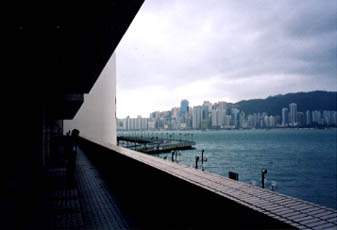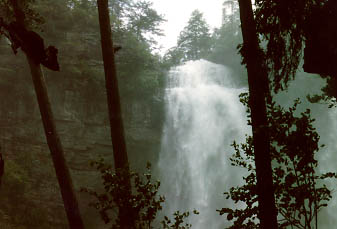The following picture is taken by a friend who visited Hong kong recently. It is also a good example of NOT using a flash. With a flash, the photo may turn out just another tourist snapshot. Without a flash, the picture looks very interesting for its contrast and composition.

Another example is shown below. Many years ago two of my friends visited Fall Crete Fall in Tennessee. One of them left the camera setting at default and shot a very clear and sharp picture. In my view that picture is uninteresting. In contrast, I turned off the flash and took the following picture. The silhouette in the forground not only enhances the contrast and the composition of the picture, but also creates a sense of depth to the viewer.

However, if you have a sophisticated camera, turning off the flash alone may not produce the desired result as shown above. Today many high-end cameras are equipped with a multi-segment metering system (in Nikon models it is called matrix metering), which divides the view into many segments and evaluate the light intensity of each segment differently. For example, when the brighter area and the darker aera are highly contrast, the multi-segment metering could detect the problem and compensate it by over-exposing the film. There are several approaches to recitify this situation:
- Buy a cheap camera without a multi-segment metering system (just kidding)
- Switch from multi-segment metering to spot metering. Use spot metering to measure the light intensity of the bright spot.
- Point the camera to a bright area, turn on exposure lock, and then re-compose the view.